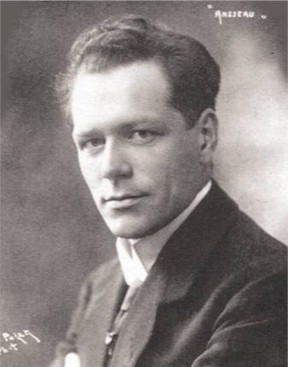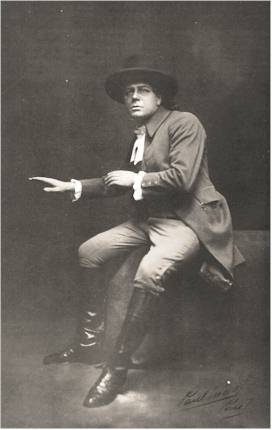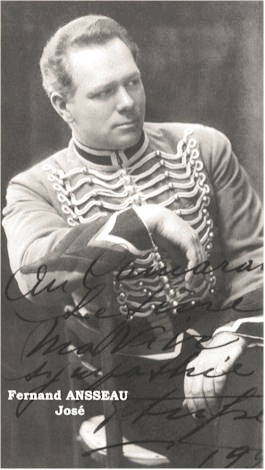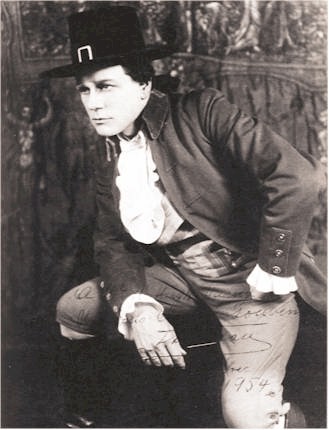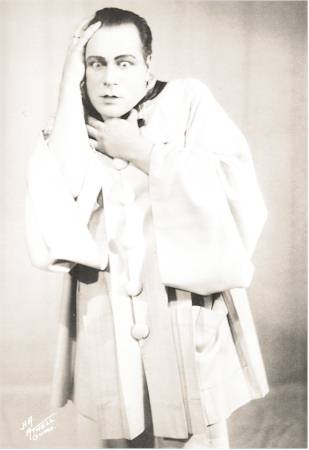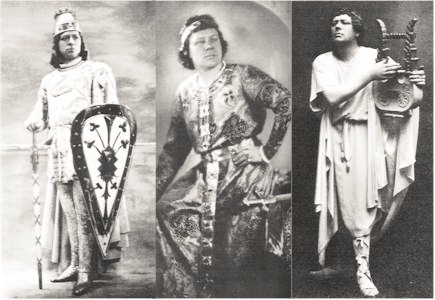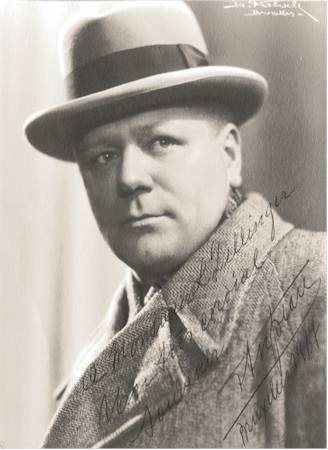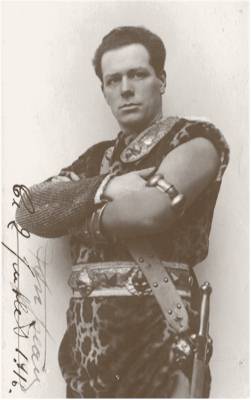Belgian tenor, 1890 - 1972
Biographical notes: Fernand Ansseau’s background was musical. His father played the organ in the village church of
Boussu-Bois near Mons (Wallonia) where the artist was born. At the age of 17 he entered the Brussels conservatory and became a student of the noted teacher Désiré Demest. It was in
church music (Mozart’s Requiem) he appeared for the first time. Demest trained him as a baritone, but Ansseau felt that he was making too little progress. His teacher directed him to
change to tenor, noticing his student’s increasing ease with the upper register. After studying three years with the celebrated Flemish tenor Ernest van Dijck, Ansseau made his widely
acclaimed debut as Jean in Massenet’s Hérodiade (the role was to become one of his most successful achievements). During his career he appeared in roles such as Sigurd, Faust, Julien
and Don José. He was the tenor lead in Saint-Saëns’ first performance of Les Barbares. As a Belgian patriot he refused to appear on the operatic stage during World War I and sang only
occasionally. After the war he resumed his operatic career at the Théâtre de la Monnaie in Brussels, as Canio (1918). Particularly in Auber’s liberation opera La Muette de Portici he was
much applauded. His repertory at “The Munt” included Radames, Samson, The Duke of Mantua, Jean, Don Alvaro, Faust (Berlioz), Des Grieux (Manon) and Cavaradossi. He remained at this
important opera house until his retirement. 1919 saw his Covent Garden debut, singing Des Grieux with the soprano Marie-Louise Edvina as Manon and Beecham as conductor. Ansseau became a
well-known singer at Covent Garden and appeared as Faust, Canio, Cavaradossi and Roméo, opposite Dame Nelly Melba. He refused a generous offer by general manager Gatti-Casazza in
1920 to sing at the Met, not keen to leave home for an extended period. In 1922 he sang at the Paris Opéra as Jean, Alain (Grisélidis), Roméo, Lohengrin, Tannhäuser, Admète (opposite Germaine Lubin) and again as Roméo. From 1923 to 1928 he was a regular member of the Chicago Civic Opera, enjoying remarkable popularity. The “Reigning Queen”, Mary Garden was full of praise for the tenor, becoming a favorite partner of the Diva. He was the tenor lead opposite her
in Alfano’s Risurrezione and in Montemezzi’s L’Amore dei tre Re. Ansseau spent his active years in Brussels but often reappeared in Ghent and Antwerp. His last performance at the La Monnaie was
in 1939. His rather early retirement was often linked to the war and given a patriotic twist, also by Ansseau himself. Some people who knew him attribute it more to saturation. From 1942 to 1944
he served as a Professor of Voice at the Brussels conservatory, devoting the following decades to his hobbies, fishing and gardening. He died where his was born, in Boussu-Bois.
As Werther “Mary Garden and Fernand Ansseau thrill in Werther.” Herald Examiner, 1924
As Don José “The most magnificent lover on the operatic stage today. A man with brain.” Mary Garden, Boston Post, 1912
As Werther “The outstanding feature of Ansseau’s art is the velvety quality of his tone, which is rich and luxurious throughout its entire range which flows, with graceful ease and always strikes the ear pleasantly.” Paul L. Martin, Journal of Commerce, Chicago, 1923
As Canio “Je ne chanterai pas pour les Allemands...J’ai gagné assez pour vivre.” Fernand Ansseau, 1940
“My dream is to stop singing when I am 40 and take an old house in the country, near a good trout stream.” Fernand Ansseau, Evening Standard, 1919
Lohengrin (1922) - Tannhäuser (1929) - Orphée (1921, creator of the tenor version)
“J’ai décidé de ne plus retourner en Amérique, quoique les cachets que l’on me propose sont on ne peut plus tentants.” Fernand Ansseau in a letter to Jacques Rouché, 1928
Comment:
His was a full, richly-varied lyric-dramatic tenor voice with plenty of thrust, well placed on the breath, the high notes free and ringing. After Paul Franz Ansseau was the finest tenor active in
the French repertory (Michael Scott). With his beautiful singing of inner animal drive and dramatic verve Ansseau has made a number
of outstanding records. To me, his singing with passion and fire is more suitable to dramatic roles than to lyrical parts. I particularly like him in Monna Vanna, Hérodiade, L’Africaine and in
Pagliacci. In my opinion Werther, Roméo and Don José request a more lyrical voice. However, I am sure that many of you will disagree on this point.
As Hélion in Messaline’s Isidore de Lara
My warmest thanks to Jan Neckers and Rein A. Zondergeld
|
|||||||||||||||||||||||||||||||||||
